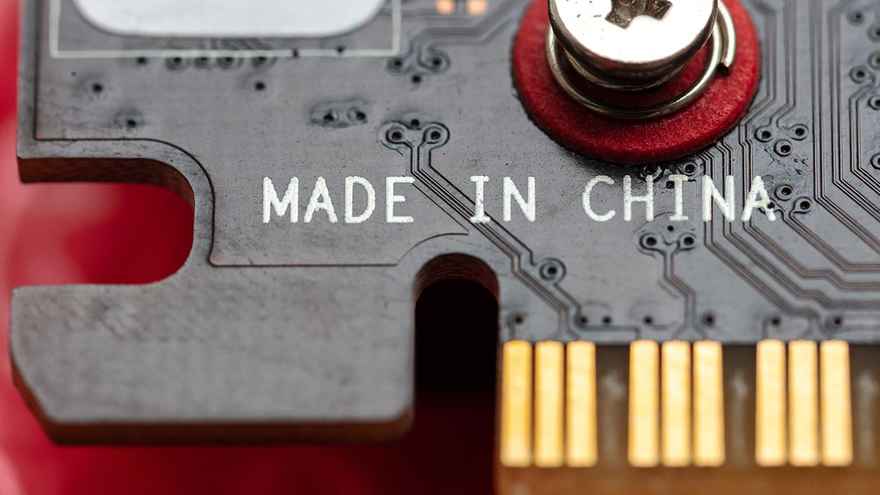Is Technology the Key to Geopolitical Power?

The challenge of the 21st century is not the war in Ukraine, but the economic and technological competition of the West with China going forward.
The Chinese have a publicly available doctrine (The 14th Plan) which clearly sets out the 2030 goals of the Chinese Communist Party, namely to make China a global leader in:
- Synthetic biology
- Artificial intelligence
- Quantum physics and mechanics
- New energy
- Clean transportation
No longer than half a century ago, China was just a massive agricultural country, run by one of the strictest communist totalitarian regimes, a country that very few would ever hypothesise that it would become the world’s new superpower just 50 years later.
Most of today’s technology though is a remnant of American defence, tracking and attack systems that were solely built as ‘necessities’ of the Cold War:
- Developed by the US Army in the 1970’s, the ancestor of today’s smartphone – the cellular phone as it was called then – was used as a military tool.
- The microchip was first commissioned by the US Air Force to fly the F14 and cruise missiles.
- It was the US Navy that commissioned the building of the first GPS system so that its submarine squadrons could always find their correct location.
- The digital camera was first developed for space satellites so that pictures could be constantly taken without having to ‘return’ the roll of film back to Earth.
- The USA’s Defence and Research Project Agency (DARPA) developed the Internet so that information could be almost instantaneously transmitted from one party to another, without wasting precious time to mail that same information.
In short, to understand today’s technology one must first understand the geopolitical requirements of the United States. What we came to consider as indispensable items of our daily lives - smartphones, digital cameras, GPS, and internet – have started their existence as military equipment.
The old structures, the ones that we have become accustomed to and used for decades, are no longer fit for today’s geopolitical landscape. The shifting global security map will be largely determined by new technologies.
China’s surveillance state would make George Orwell blush: should the West look at China and try to compete with it when it comes to technology domains? Should the West look at the technology trends and where they are heading towards? Should the West look at the policies that are in place and then look at the technologies required to make those policies successful?
China is already the world’s leader in financial services and communications, so it should not come as a surprise if their 14th Plan becomes reality by 2030.
China has recently announced that it has begun producing 7 nanometres semiconductors: no one else in the world, not even the most advanced technological laboratories in the United States, have been able to achieve this before China did. This matters because all new technologies depend on this computing technology.
China’s dominance is therefore possible, and its investments are definitely working. The recourse for the Western countries would be a sharp focus on the technologies that require investment, and on long-term and project-based public-private partnerships: the national governments can help with the list of priorities and funding, the universities/research institutes/tech start-ups can carry out a lot of the basic research, and the private capital can bring in the investment needed to take the research to market.
The most interesting emerging areas in artificial intelligence (AI) are large language models, or foundational models, which appear to have some level of understanding of synthesis of ideas, and which can translate these concepts from one language into another even if the AI hasn’t been trained or taught that other language.
Multimodal conversational systems that can generate new images or words are going to be the ‘it’ of the next five years. Microsoft, for instance, has an incredible programming assistant which – once programmed – it can finish one’s work.
For the moment, that programming assistant handles about 20-30% of the workload. What will happen when Microsoft can develop this assistant to handle 80% of the programming work? How high will the programming productivity parameters be then? And what would happen if China did all this as opposed to Microsoft?
It is not about who wins the technology battle, but about who sets the rules, protocols, and the morals of the AI. We are close to delegating military-decision making to the AI, which could be extremely dangerous and destabilising if the rules and protocols surrounding it are not comprehensive enough.
The technology challenge needs to be thought of not in a bipartisan sense, but in an alliance of democracies that goes beyond the traditional trade-based alliance format.
Starting 2020 – and over the course of the past two years - the world has been facing not just one problem but several:
- The first pandemic in over 100 years
- The first war in Europe in over 70 years
- The biggest inflation in over 40 years
- Potentially the first recession in 12 years
- A flattening or declining population shift in over 700 years
- The biggest change in climate in 12,000 years
Although most of humanity is rallied behind a call for action on all of the points above, the fabric of the modern society is torn apart between two systems, as ancient as Herodotus’ teachings: totalitarian and authoritarian rulers in the East and democratically elected governance systems in the West.
China is heavily investing in public sector innovation because everything in China is largely owned, one way or another, by the Chinese state. The Western world hopes to counter China’s incredible technological headway by creating partnerships funded by private wealth, guaranteed by the national governments, and fuelled by the creativity and innovation of universities, research centres and tech start-ups.
It remains to be seen though who will win the geopolitical race.